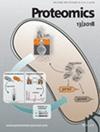Metaproteomic Analysis to Assess the Impact of Storage Media on Human Gut Microbiome in Fecal Samples
Abstract
The human gut microbiome is a diverse community of microorganisms residing in the gastrointestinal tract. The storage condition of fecal samples may impact the taxonomic and protein compositions of microbiomes in these samples. Here, we performed a mass spectrometry-based metaproteomic study to assess the impact of storage media on human gut microbiome in fecal samples. We evaluated FDA-authorized OMNIgene·GUT (OG), phosphate-buffered saline (PBS), and RNALater (RNAL) buffers and identified 38,185 microbial peptides corresponding to 7348 microbial proteins, which matched 16 phyla, 20 classes, 50 orders, 104 families, 332 genera, and 453 species. We found a high similarity among the fecal microbiomes preserved in OG, PBS, and RNAL in terms of the identification of proteins, taxa, and functional annotations. Both alpha and beta diversity suggested the high similarity among samples stored in the three media. Nonetheless, we also found some notable differences among buffers regarding the abundances of a few taxon groups. A partial human proteome (over 400 proteins) was identified in the fecal samples, with most of these proteins associated with the membrane and extracellular regions. The findings indicate the similarity among microbiomes in the fecal samples stored in OG, PBS, and RNAL regarding proteome profile, taxa, and functional capacity.
Summary
-
This study thoroughly analyzed and compared the metaproteomes of fecal samples preserved at −80°C in PBS, RNALater, and OMNIgene·GUT Dx buffers, offering novel insights into the effectiveness of these buffers in maintaining the stability and composition of the human gut microbiome.
-
We found a high similarity in the identification and quantification of proteins, taxa, and functional annotations across the three buffers, with notable quantitative differences highlighting subtle yet important variations in preservation efficacy.
-
The unique datasets and findings could offer valuable revelations into the impact of fecal sample preservation on translational and clinical analyses of the human gut microbiome.


 求助内容:
求助内容: 应助结果提醒方式:
应助结果提醒方式:


